Japanese calligraphy, known as shodo, is the art of writing Japanese beautifully. Meaning “the way of writing,” shodo has a rich history stretching back thousands of years. The three primary types of shodo are block style (kaisho), semi-cursive style (gyosho), and cursive style (sosho).
In addition to being taught in schools, Japanese calligraphy is a major pastime and artistic pursuit in Japan. It is a significant feature of many historical artifacts, artworks, and cultural sites across the country.
Visitors enamored by Japanese calligraphy can take part in shodo workshops in most major cities.
Shodo Tools
There’s much more to Japanese calligraphy than pen and paper. The tools of calligraphy are a significant part of the artistic experience and cultural tradition of shodo.
Here are the four crucial tools of shodo, known as Bunbu Shihō (The Four Treasures of Calligraphy):
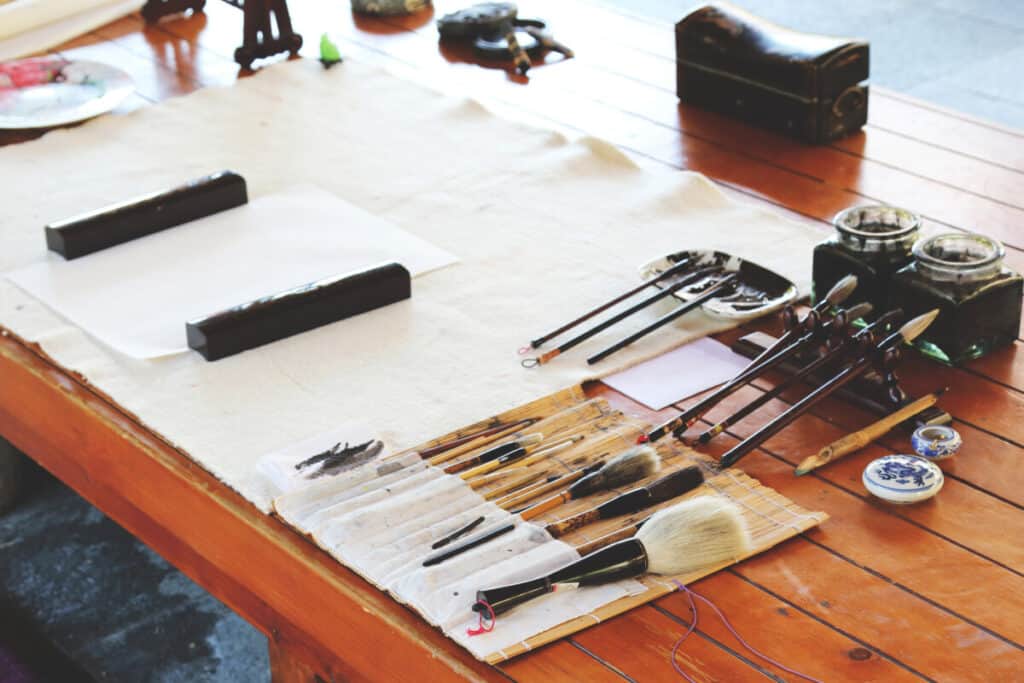
- The Brush – Fude – Brushes come in various sizes. The best ones are often hand-made and use a blend of hairs.
- The Inkstick – Sumi – Usually made of soot and glue, the inkstick is ground on the inkstone and blended with water. The resulting ink is used for writing.
- The Inkstone – Suzuri – The suzuri is the small stone used to grind and blend ink for calligraphy.
- Mulberry Paper – Washi – Washi is a Japanese paper usually made from the paper mulberry bush. Artisans process this paper by hand using traditional Japanese methods.
The following tools, while not required, are also helpful for Japanese calligraphy.
- A Seal – In – Students of calligraphy can and should create their own unique seals through wood-engraving. The art of seal-engraving is known as tenkoku.
- A Cloth – Shitajiki – A cloth is placed under the washi to prevent bleed-through and spilling. Any large scrap paper is acceptable.
- A Paperweight – Bunchin – Used to hold a practitioner’s paper in place. They’re typically long heavy sticks.
The Styles of Shodo
Over the years, numerous styles of Japanese Calligraphy evolved. Today, there are chiefly three types: block style, semi-cursive style, and cursive style.
Instead of learning all of them at once, practitioners usually start with the block style (kaisho). Kaisho is considered the most accessible form of shodo and provides the foundation for calligraphy techniques.
Then, students move onto semi-cursive style (gyosho). Finally, they’ll end by learning the challenging but beautiful cursive style (sosho).
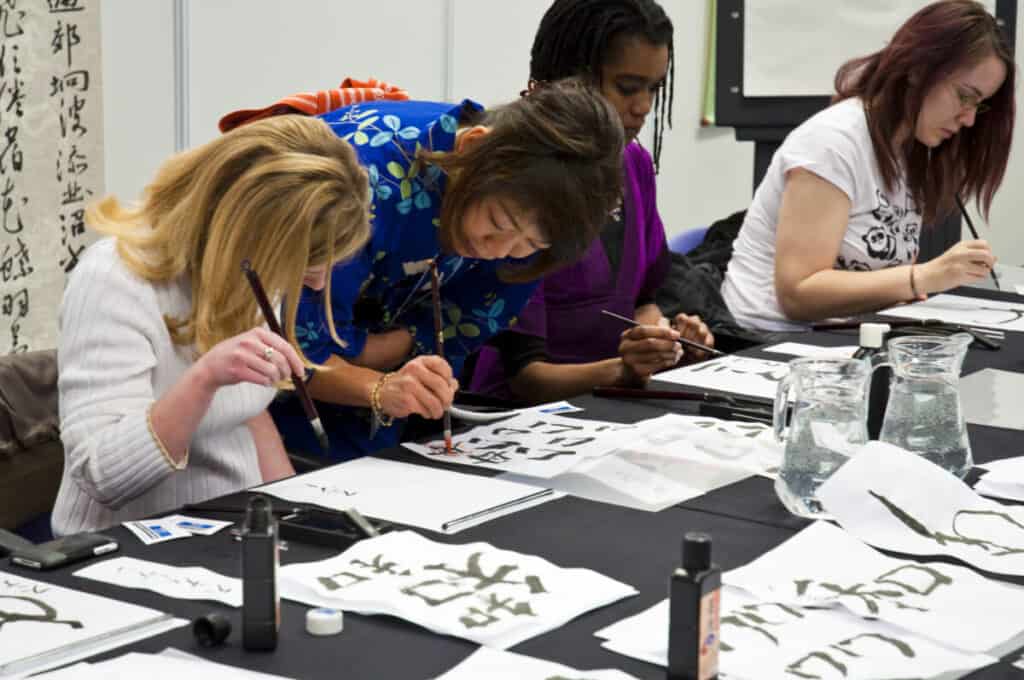
The Block Style (Kaisho)
Kaisho, or “block style,” is where a calligraphy student’s journey begins.
This style of calligraphy is the most readable and straightforward of the three. It resembles the text you’d see on a keyboard or standard pieces of writing.
Block style utilizes more strokes than the other styles. While it’s often visually appealing, many practitioners see it as more of a critical stepping stone to different techniques and styles.
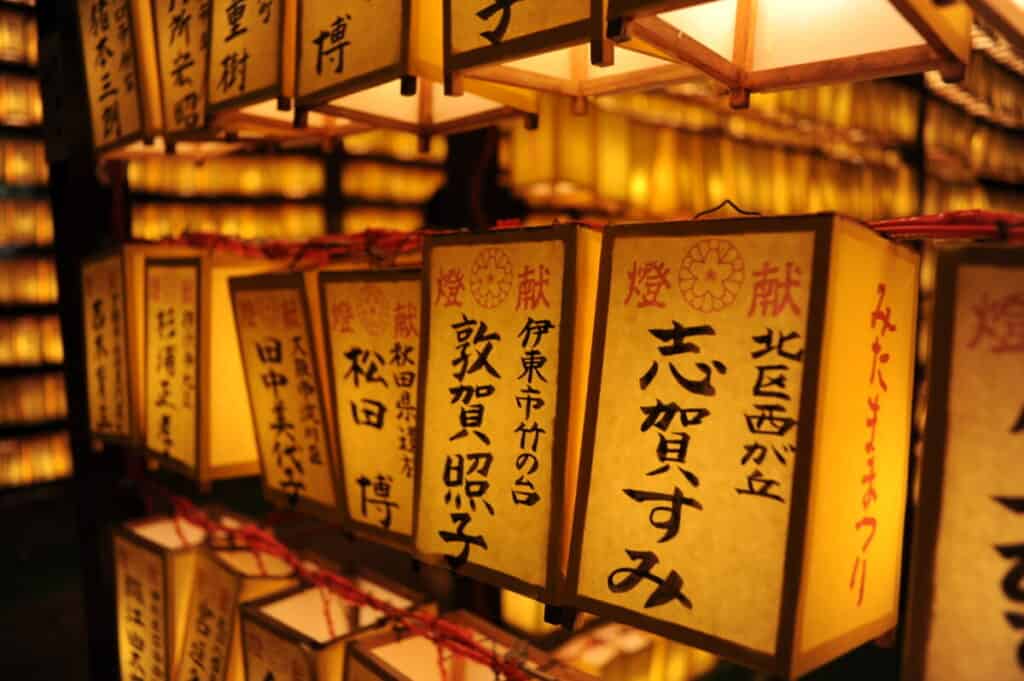
The Semi-Cursive Style (Gyosho)
Gyosho, meaning “semi-cursive style,” is the next step up from kaisho.
The semi-cursive style focuses on avoiding the rigid, sharp looks of block style. The writing should still be somewhat legible but also impart a sense of movement and grace.
Additionally, gyosho abbreviates or combines many of the strokes used in kaisho. As practitioners improve with this style, they should pick their brush up less while writing. This is why the semi-cursive style looks more “wavy” and fluid than the block style.
Gyosho is especially popular with hobbyists because it balances legibility with aesthetic elegance.
The Cursive Style (Sosho)
Known as the most abstract type of Japanese Calligraphy, sosho (“cursive style”) is arguably the purest form of shodo as art.
In sosho, calligraphers focus on aesthetics and movement more than readability. This style, as a result, is frequently illegible compared to other types of shodo.
Students of this style learn to write the way a breeze moves through the grass. The flow of strokes should be fluid and continuous. Sosho should look natural and beautiful above all else.
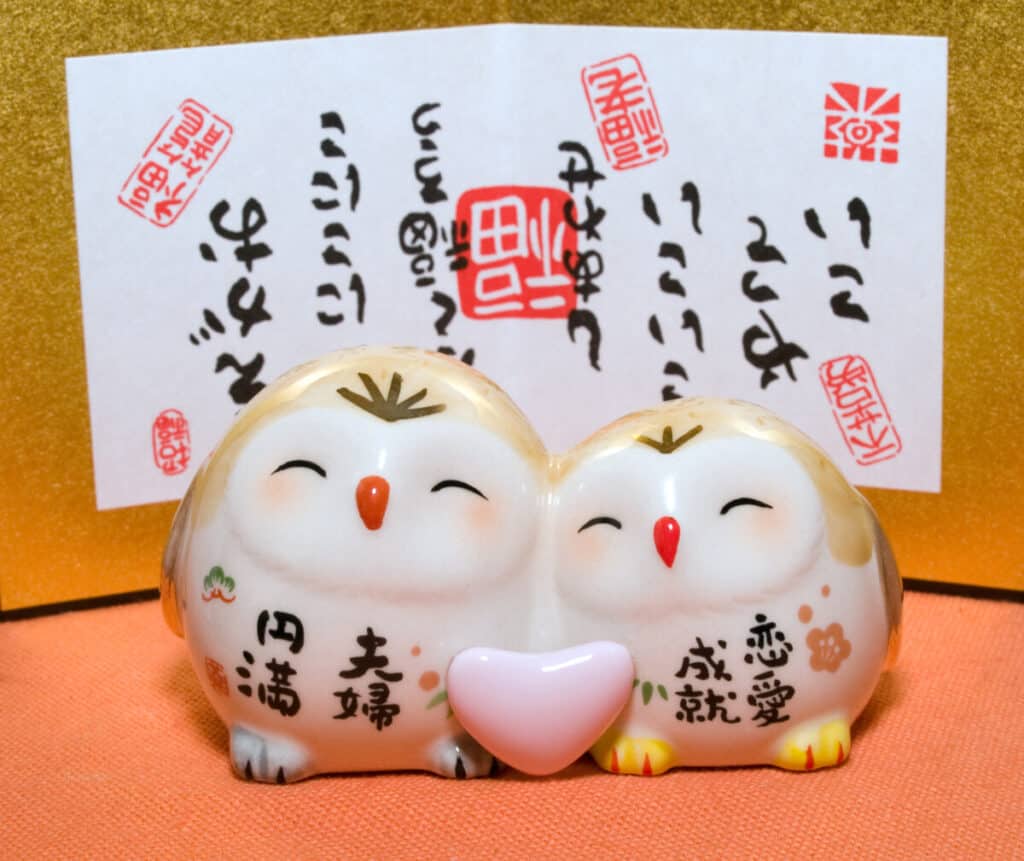
Even more so than semi-cursive style, sosho abbreviates and combines strokes. Different characters can even blend into each other, meaning the brush rarely leaves the washi during writing.
The decorative look of the cursive style makes it beloved by calligraphers. Its focus on feelings and aesthetics also makes it the most meditative style.
Shodo Workshops and Lessons for Tourists
Many tourists to Japan seek the opportunity to try shodo themselves.
Throughout the country are numerous workshops that teach beginner’s lessons for international visitors. Generally, these workshops are a part of temples or cultural centers.
While they’re found everywhere in Japan, workshops catering to English speakers are more common in tourist areas. These include major cities like Tokyo and Kyoto, as well as historical sites.
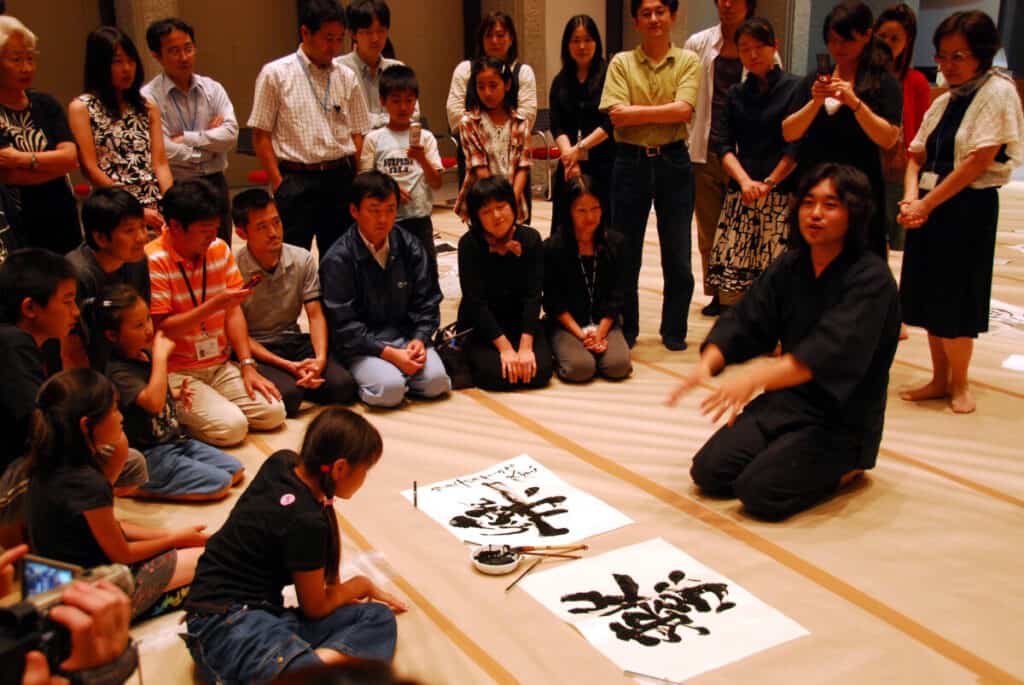
Most lessons for tourists will start with an introduction to the history and tradition of shodo. Afterward, a teacher will demonstrate some basic techniques and oversee their students’ work.
In the end, participants can then seal their artworks to take back (or mail) to their homes. Many instructors may even show participants how to write their own names or a word important to them.
Unfortunately, the COVID-19 pandemic has caused many shodo classes to halt temporarily. However, interested visitors can still take part in virtual lessons offered by some workshops.
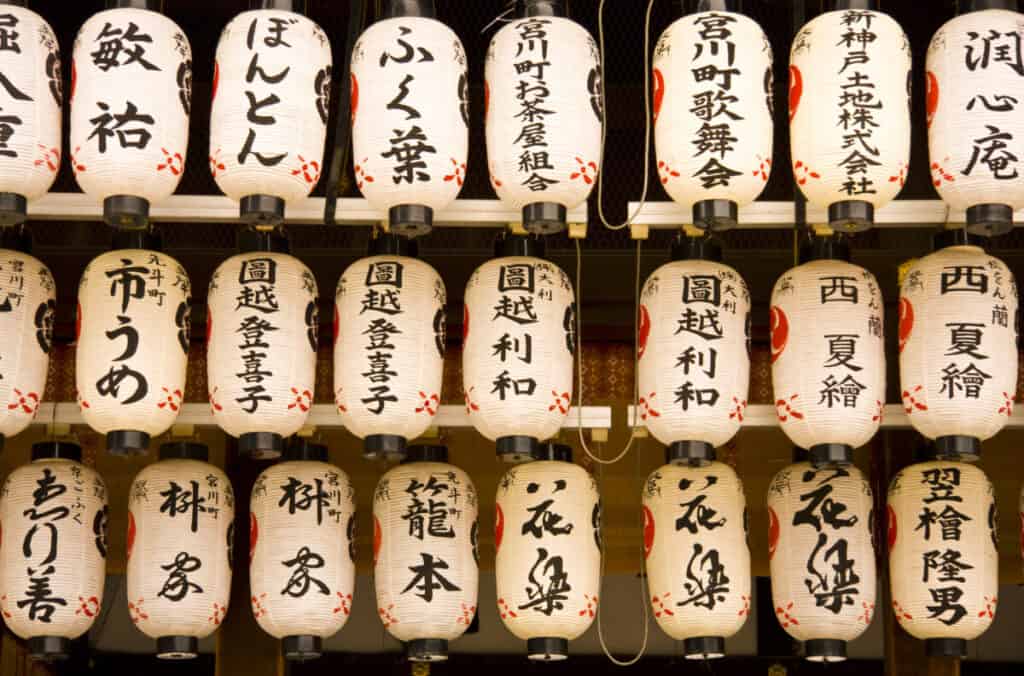
The price of shodo lessons varies, but they are usually around ¥1000 to ¥5000. Advanced registration or a reservation is typically required as well.
While learning shodo is a never-ending process, it remains a very approachable and relaxing art form. Visitors should not pass up the opportunity to partake in this fascinating part of Japanese culture.
History of Shodo
Shodo’s roots stretch back to 13th century BCE China. Originally, calligraphy evolved from inscriptions made on bones for religious ceremonies.
Ancient Chinese rulers adapted these inscriptions for administrative purposes. And to indicate style and artistic expression, they began encouraging the use of variable writing techniques.
Eventually, these variable styles became recognized, and rules developed to codify specific types of calligraphy.
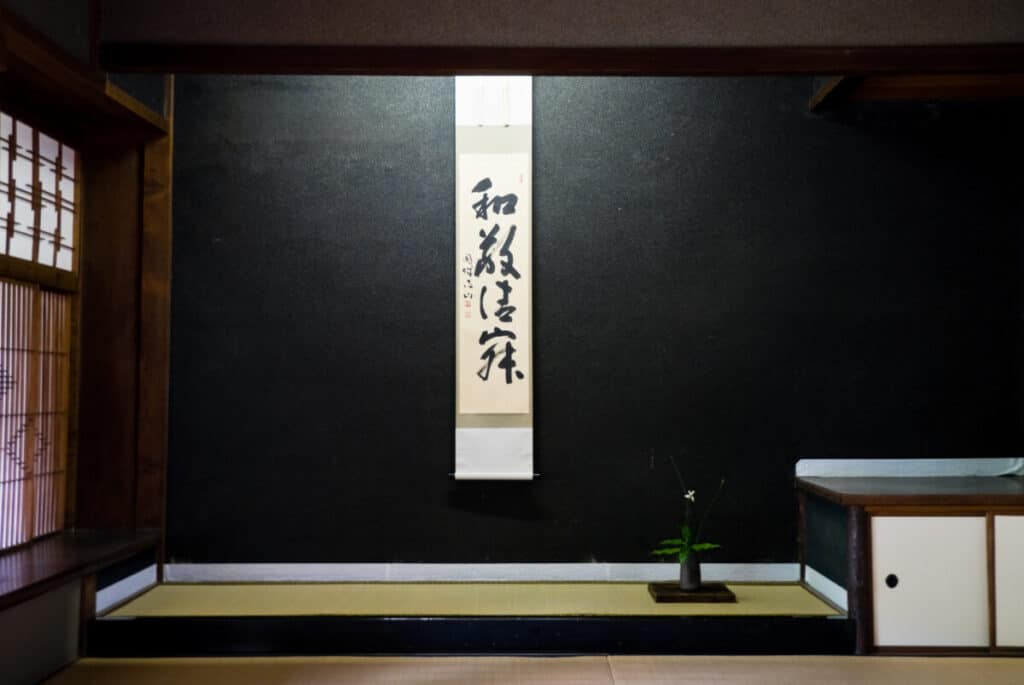
As the years rolled by, Japanese writers and artists slowly began to incorporate the styles of Chinese calligraphy. By the late 700’s, forms of calligraphy unique to Japan and Japanese text began emerging.
Fueled by a sense of national pride, Japanese artists and bureaucrats started to codify and define what shodo is. Over the course of hundreds of years, shodo would continue evolving into varying styles.
The artist Hon’ami Kōetsu (1558-1637), in particular, contributed significantly to the growth of Japanese Calligraphy.
He innovated the use of calligraphy paper made to order, helping standardize the materials of shodo. Hon’ami Kōetsu also added decorative backdrops to his writing, such as flowers and butterflies.
These visual elements further married calligraphy to the arts and poetry through the inclusion of natural aesthetics.
Shodo Today
In the modern-day, shodo plays a significant role in Japanese education, art, and culture.
Schools across Japan commonly teach shodo. Many high schools not only offer it as an art class but also sponsor calligraphy clubs and events. In addition, Japanese universities have departments and programs dedicated to shodo.
Performance calligraphy, which blends shodo with music and dance, is especially popular with young practitioners.
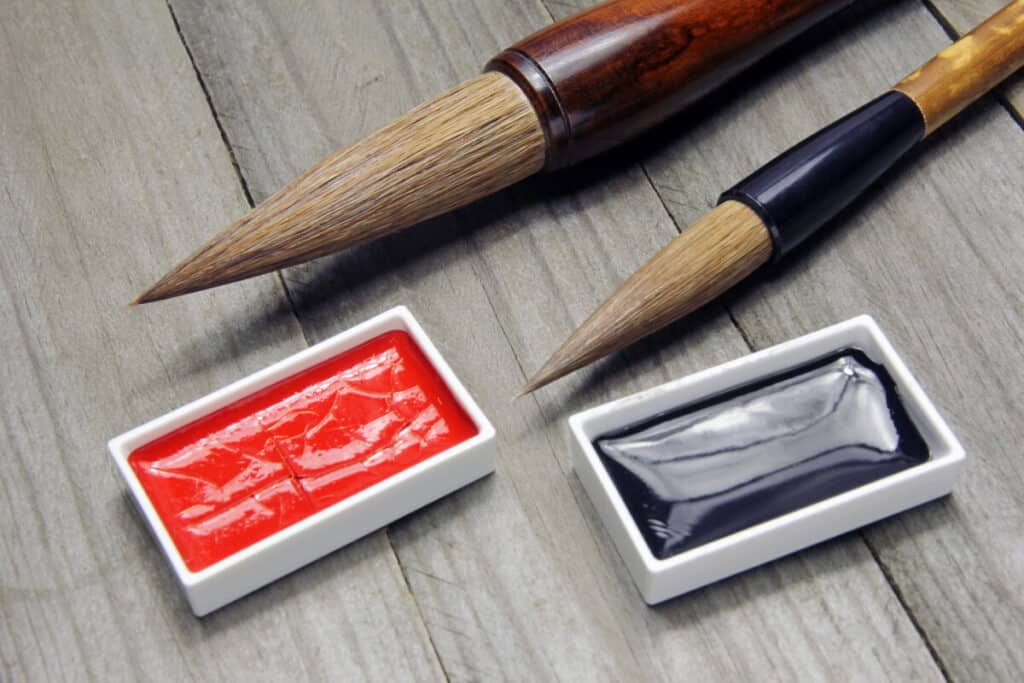
Japanese calligraphy is also a major pastime in Japan. Some view calligraphy as a craft and strive towards perfection. Meanwhile, others follow the Zen philosophy of reflective writing.
High-quality pieces of shodo writing and shodo scrolls are often displayed in Japanese homes for others to enjoy. Typically, they’re placed in the tokonoma. The tokonoma is a special alcove meant to hold items for artistic appreciation.
Practitioners today also have unprecedented access to equipment and educational resources. If someone can’t find calligraphy tools nearby, there are plenty of options online. Plus, the internet offers numerous introductory lessons and guides for the curious who want to try it.
Shodo and Zen Buddhism
The stories of Japanese calligraphy and the Zen school of thought are intertwined.
Zen Buddhists developed Hitsuzendō, a form of Japanese calligraphy focusing more on the experience than on the physical art itself. This marriage of zen philosophy with calligraphic practices is often symbolized through the circular ensō symbol.
The idea that calligraphy brush strokes are continuous and prone to human fault aligns with Zen ideology. Ink on paper is permanent, just as our actions are. And flaws can be evidence of inner turmoil or lack of confidence.
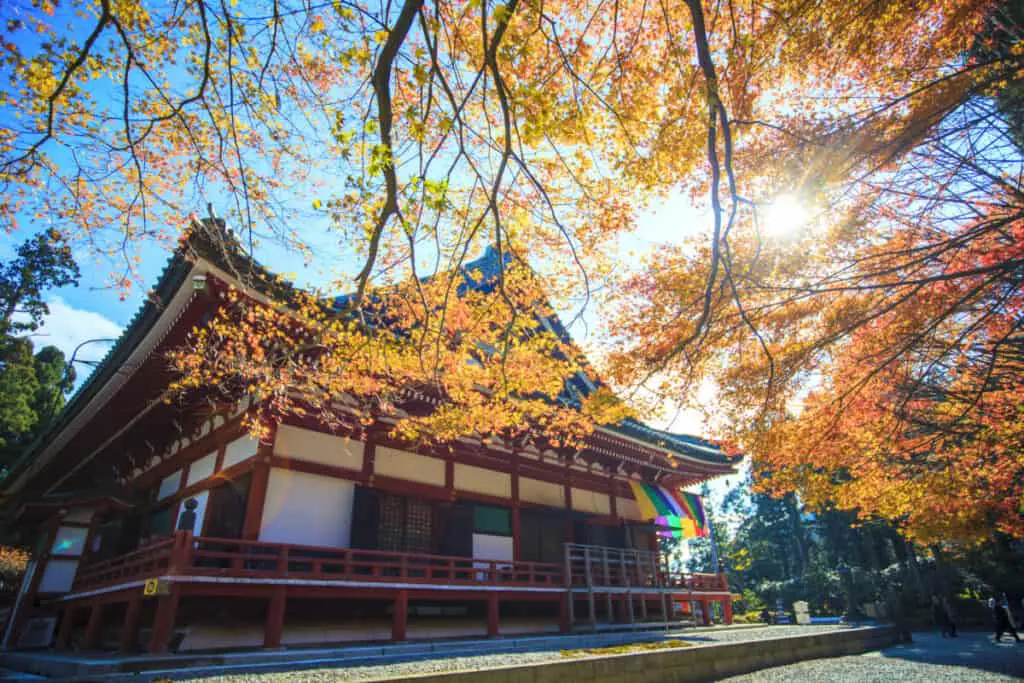
The best Zen calligraphy brings a sense of serenity and completeness to the viewer. Before Japanese tea ceremonies, participants will sometimes look at works of calligraphy to instill this feeling of tranquility.
When practicing Zen calligraphy, students and monks are encouraged to let the writing flow from them. In Zen calligraphy, it’s believed trying or focusing too hard will dilute the power and aesthetics of the art.
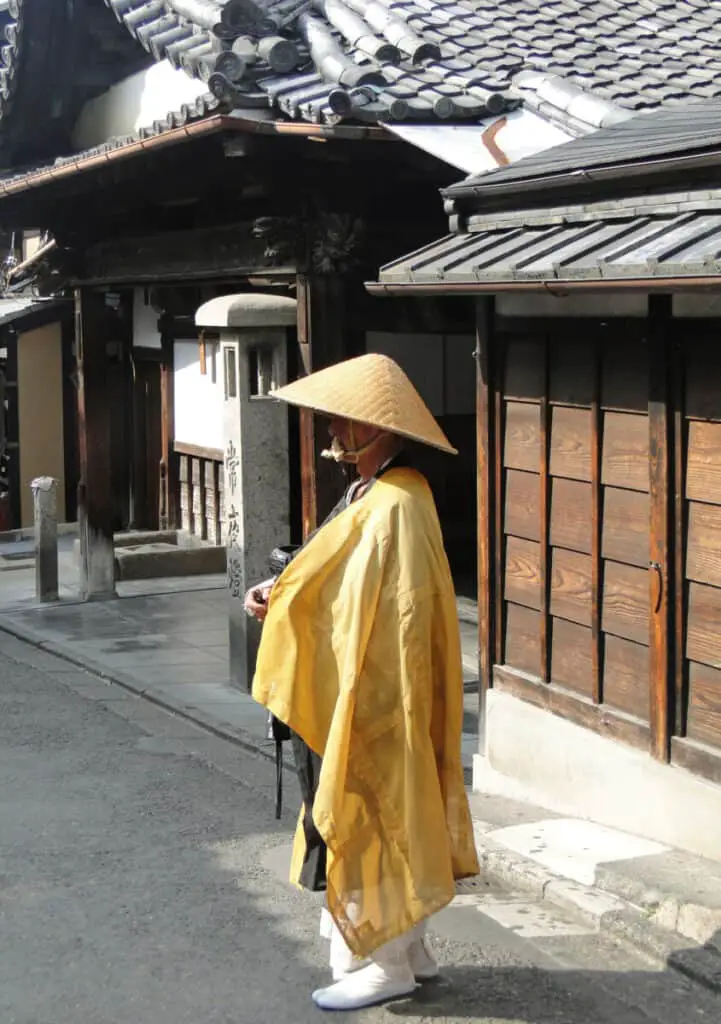
Practitioners of Japanese Zen calligraphy should instead try to achieve a state of mushin.
Mushin, or “the state of no-mind,” means separating one’s ego and emotions from their mind. It allows for the purest and most meditative calligraphy.










